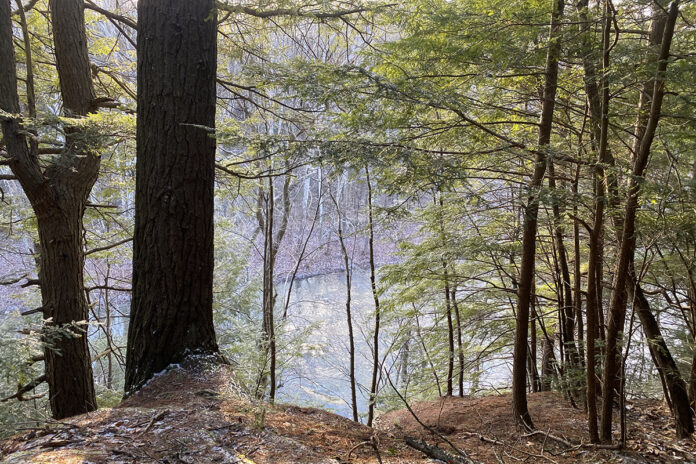Portage SWCD collaborated with the Ohio Department of Natural Resources Division of Forestry and Kent Roosevelt High School’s Forestry and Landscape Management crew April 25 to remove callery pears at Phillips Park in Franklin Township.
The students also planted an Ohio native tree provided by ODNR to celebrate its 75th anniversary. Portage County received and planted a sycamore. Removing invasive species AND planting native trees — now that’s doubling down on conservation.
Ohio’s forest economy
Forest products provide a $30 billion annual economic impact in Ohio. Ohio forests also produce some of the best hardwoods in the world. So, it stands to reason that Ohio would also produce high quality wood products. Ohio ranks number one in the U.S. for high grade furniture production.
Ohio’s forests also provide much of the wildlife habitat in the state. Hunting, fishing, watercraft and parks combined contribute another $12 billion in economic impact in Ohio annually. It’s easy to make the connection between wildlife habitat and hunting. But woodlands also contribute to cleaner, cooler water which improves fishing and other water sport activities.
Threats
Ohio’s forests face many threats. Invasive plant species are a major challenge for woodlot management. Invasive insect species such as emerald ash borer, which decimated our native ash population, are changing forest composition.
Additional pests such as Asian longhorned beetle have us constantly on guard in our efforts to keep them at bay. Many invasive exotic insects were introduced unintentionally via international trade. Both EAB and ALB are believed to have arrived in pallets or other wood packaging. However, some invasive species (both plant and animal) are a result of our aesthetic preference for non-native plants.
Non-native bush honeysuckles, burning bush and barberries are just a few of the many invasive plant species that are inhibiting native hardwood regeneration in Ohio. Each of these species were intentionally brought to the U.S. through the horticultural trade industry as ornamental plants for the home landscape.
Hemlock wooly adelgid is another non-native forest pest. HWA arrived in the U.S. in the early 1900s on a Japanese Hemlock at a time when no international controls were in place. Again, it was our aesthetic preference for a non-native species that is now resulting in the devastating loss of our native hemlocks.
When to seek assistance
Foresters and resource professionals provide a variety of valuable assistance to landowners. But there are several critical times when forest owners should seek professional assistance. Seek assistance when you have an identified threat to your woodlot.
For most threats to Ohio’s forests, there is also a management strategy to help landowners protect their woodlands. Best management practices are developed by resource professionals through field-tested trials. A forester or resource professional can fast-track you to the right course of action.
If you are a woodland owner, you should be on high alert for oak wilt. Oak wilt can be managed, but it is an aggressive disease that can destroy your oaks before you even notice its presence. Don’t let this disease sneak up on you. The Wisconsin Department of Natural Resources has some excellent information to help with oak wilt identification. Seek professional assistance if you believe you have oak wilt in your woodlot.
The most critical time to seek help from a forester is when you are planning a timber harvest. Poorly managed timber harvests represent one of the most significant preventable threats to Ohio’s forests.
A poorly managed timber harvest can result in significant soil erosion and water pollution; a large number of scarred and damaged trees; reduced diversity and loss of your forest’s most commercially valuable trees; suppressed regeneration of commercially valuable or rare tree species; rapid spread of invasive exotic plant species; reduction of habitat for wildlife species of concern such as amphibians, reptiles and songbirds and a forest that is left more vulnerable to disturbance associated with pathogens and disease.
For more information about planning a timber harvest, contact ODNR Division of Forestry’s “Call Before You Cut” program prior to signing any type of contract with a timber buyer. Visit callb4ucut.com/ohio/ for more information.
Many SWCD offices also have staff that can connect landowners with resource professionals. The Ohio Society of American Foresters also maintains a directory of forestry professionals at osafdirectory.com. Your local SWCD can likely provide you with a list of consulting foresters that work in your area.













